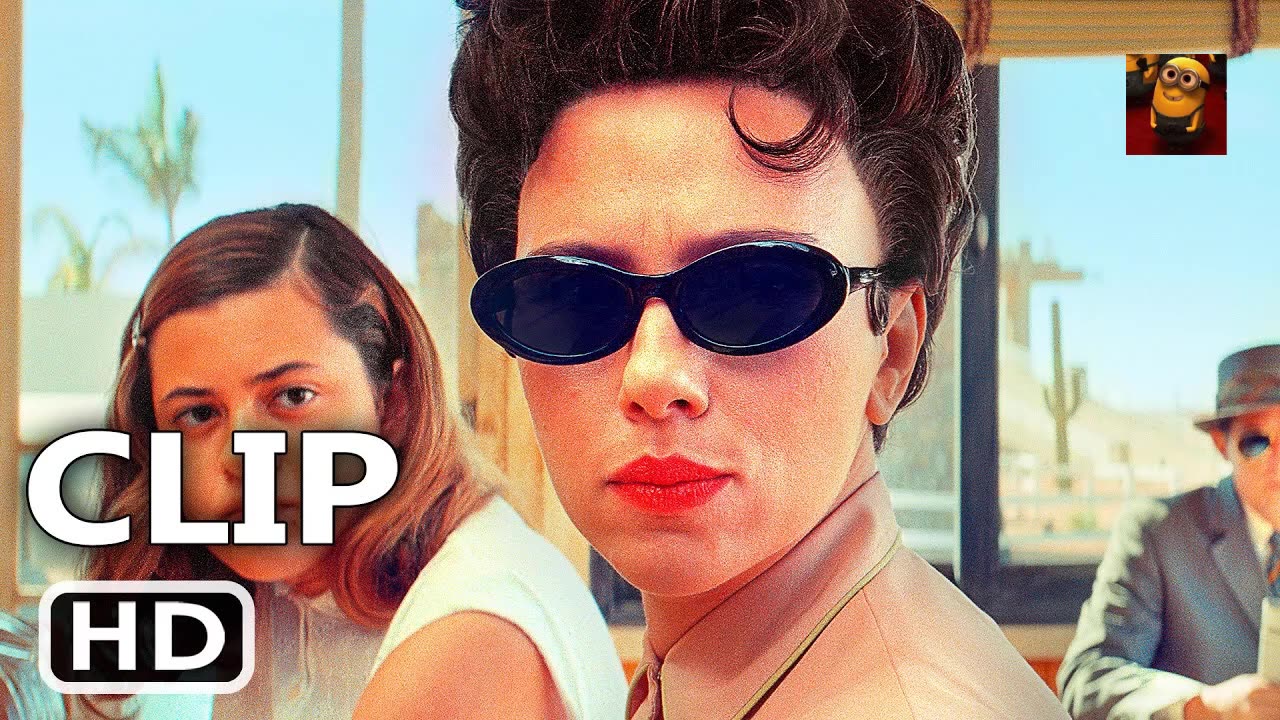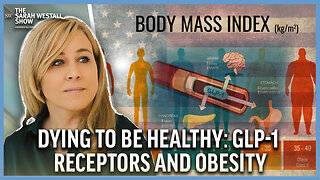Premium Only Content

ASTEROID CITY _You Took a Picture of Me__ Clip (2023) Scarlett Johansson, Wes Anderson
ASTEROID CITY _You Took a Picture of Me__ Clip (2023) Scarlett Johansson, Wes Anderson
ASTEROID CITY "You Took a Picture of Me?" Clip (2023) Scarlett Johansson, Wes Anderson
© 2023 - Universal Pictures
Alissa Wilkinson covers film and culture for Vox. Alissa is a member of the New York Film Critics Circle and the National Society of Film Critics.
Nuclear bombs keep going off over the horizon of Asteroid City (population 87). “Another atom bomb test,” the characters declare, with some combination of intrigue and boredom. They trot out of the diner to look at the tiny mushroom cloud, snap a few pictures, and go back inside for more coffee. It’s 1955. This isn’t unusual anymore.
Living in the shadow of the bombs is what Wes Anderson’s Asteroid City is about — literal bombs, and also a host of other life-shattering things like loss, and existential dread, and a world changing so fast it’s hard to hang on to it. Real things, in other words, the kind everyone has to deal with. The emotions we can’t outrun, but we try to anyhow.
That Anderson set Asteroid City in 1955 is a bit of trickery, a degree of separation between the characters’ reality and our own. We live in (dare I say) uniquely frightening times, but so do these people, for whom the Cold War and a rapidly changing social order is their psychic wallpaper. Much of the movie is specifically set in September 1955, a month bookended by two events: the United States’ decision to embark on Project Vanguard, which would try unsuccessfully to beat the Soviets at putting a satellite into space; and the tragic car accident that took the life of James Dean, the iconic actor who embodied the rising rebellion of the youth. (I don’t think it’s an accident that a cop car in hot pursuit of a careening vehicle keeps rushing through the town’s one intersection.)
“If you wanted to live a nice, quiet, peaceful life, you picked the wrong time to get born,” General Gibson (Jeffrey Wright) exhorts a crowd of teenagers and their parents, assembled in Asteroid City to celebrate the landing of a meteorite there thousands of years earlier. The children have entered their wildly advanced science experiments in a contest, which the military plans to snap up; the space race is in their eyes. Later, when things go south, youths are interrogated in a manner suspiciously reminiscent of the House Un-American Activities Committee. Grown men fight, and others try to calm them down by reminding them, “We’re not in Guadalcanal anymore.”
It feels reminiscent of something real, but this is also all fiction — as the movie’s narrator puts it, “an apocryphal fabrication.” Fiction puts a layer between us and real history, a way of looking at the past through different eyes. It has another function, too: Through fiction, we process our emotions by proxy, whether we’re the artists or the audience.
That’s the subject of Asteroid City, which nests fiction inside of fiction inside of fiction. (I promise it’s easier to watch than it sounds.) Here is the most succinct description of the levels of its made-up-ness: It is a scripted movie that pretends to be a TV show in which actors stage a fictionalized version of the making of a play telling the fictional story of a place that doesn’t exist. We also see the play, but it is shot like a movie. (I am Alice, tumbling down the rabbit hole.)
-
 1:05:19
1:05:19
Sarah Westall
11 hours agoDying to Be Thin: Ozempic & Obesity, Shedding Massive Weight Safely Using GLP-1 Receptors, Dr. Kazer
91.3K23 -
 54:38
54:38
LFA TV
1 day agoThe Resistance Is Gone | Trumpet Daily 12.26.24 7PM EST
66.3K11 -
 58:14
58:14
theDaily302
20 hours agoThe Daily 302- Tim Ballard
64.1K10 -
 13:22
13:22
Stephen Gardner
14 hours ago🔥You'll NEVER Believe what Trump wants NOW!!
112K303 -
 54:56
54:56
Digital Social Hour
1 day ago $11.49 earnedDOGE, Deep State, Drones & Charlie Kirk | Donald Trump Jr.
63.6K5 -
 DVR
DVR
The Trish Regan Show
15 hours agoTrump‘s FCC Targets Disney CEO Bob Iger Over ABC News Alleged Misconduct
67.9K39 -
 1:48:19
1:48:19
The Quartering
16 hours agoElon Calls White People Dumb, Vivek Calls American's Lazy & Why Modern Christmas Movies Suck!
148K112 -
 2:08:42
2:08:42
The Dilley Show
17 hours ago $37.36 earnedH1B Visa Debate, Culture and More! w/Author Brenden Dilley 12/26/2024
127K42 -
 4:55:59
4:55:59
LumpyPotatoX2
19 hours agoThirsty Thursday on BOX Day - #RumbleGaming
115K8 -
 1:04:52
1:04:52
Geeks + Gamers
18 hours agoDisney RATIO'D on Christmas Day | Mufasa Embarrassed By Sonic 3
84.5K11